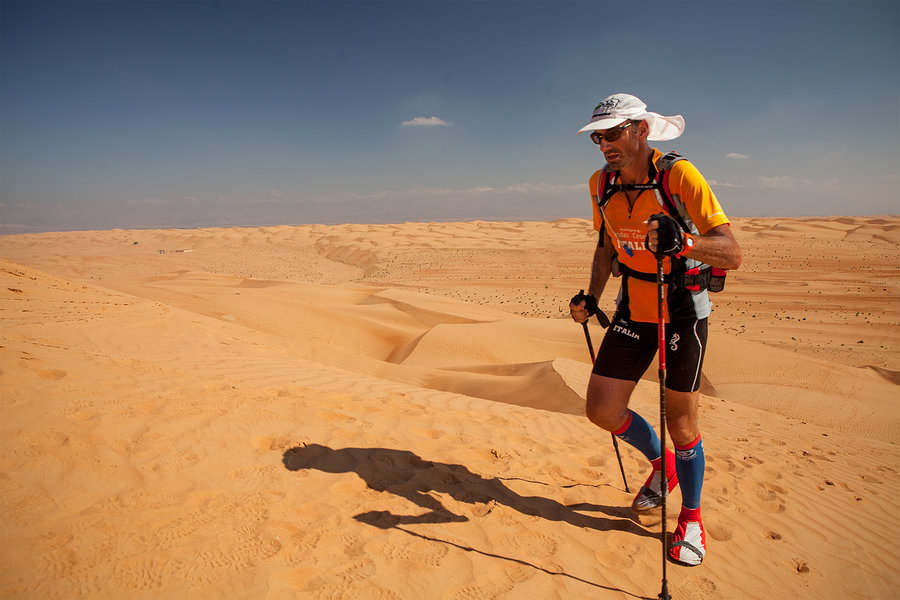
When 39 year old ultra-marathon runner Mauro Proserpi survived 10 days lost in the Saharan Desert by drinking bats’ blood and his own urine, he left everyone amazed.
After losing his way during the Marathon des Sables – a six-day, 250km race through the Sahara – Proserpi told the BBC that search parties assumed he was dead. However his grueling 12-hour a day training leading up to the event meant he would be found alive.
Proserpi’s is an extreme example of heat acclimatisation: the body’s capacity to adapt to regular physical activity in hot conditions resulting in better performance including a decreased perception of effort and heart rate.
The influence of increased fitness on one’s ability to better tolerate hot conditions is well documented in scholarly research – both in athletes and workers – and important to understand for anyone working or managing workers in hot conditions.
Thermal Physiologist, Matt Brearley, has spent his life researching human performance in challenging environments and says fitness drives heat acclimatisation, even more than living in a hot environment.
“Exercises is critical. You can’t be heat acclimatised without exercise,” Brearley told Thorzt, adding that someone who lives in Darwin but works, lives and drives in air conditioning is not heat acclimatised.
“People really can’t be acclimatised without training. Training promotes all the heat loss mechanisms: sweating and the movement of blood to the skin for heat loss.”
“Regular training makes you adapt so that when the hot days come along the stresses of the job are not new to you and you are in front of the worker who hasn’t trained.”
Symptoms of heat stress may include dizziness, headache, nausea, fatigue, vomiting, impaired judgement and lack of coordination among others, and will almost certainly lead to reduced productivity.
Brearley’s 2013 research into emergency responders working in tropical conditions found the core body temperature of non-heat acclimatised workers plateaued at 38.1oC while heat acclimatised workers reached 38.5oC despite both groups having the same starting temperatures and similar workloads.
The heat acclimatised workers were able to tolerate higher core body temperatures without being affected by heat stress, while non-heat acclimatised workers felt hotter at a lower core body temperature.
“They lowered their work rate and body heat production to prevent heat related illness,” Brearley said, explaining that it was important that employees’ exposure to heat is managed based on their level of heat acclimatisation – especially in the case of FIFO workers.
“You simply can’t assume your crew coming back from break are ready to go to work in the heat,” Brearly said, although added that workers who exercised regularly off cycle would be much better equipped.
“To get the most out of them they need to be managed through re-acclimitisation,” he said, describing that process as taking around four days and “probably longer for some”.
During these days of acclimatisation Brearley advised allowing workers to self-pace.
“Don’t put your crew who have come back from a long spell away, into the deepest part of the mine. Manage their exposure to heat in a graded manner and use cooling strategies to limit heat stress.”
For more information on managing heat stress in the workplace download our FREE Heat Stress and Hydration White Papers.